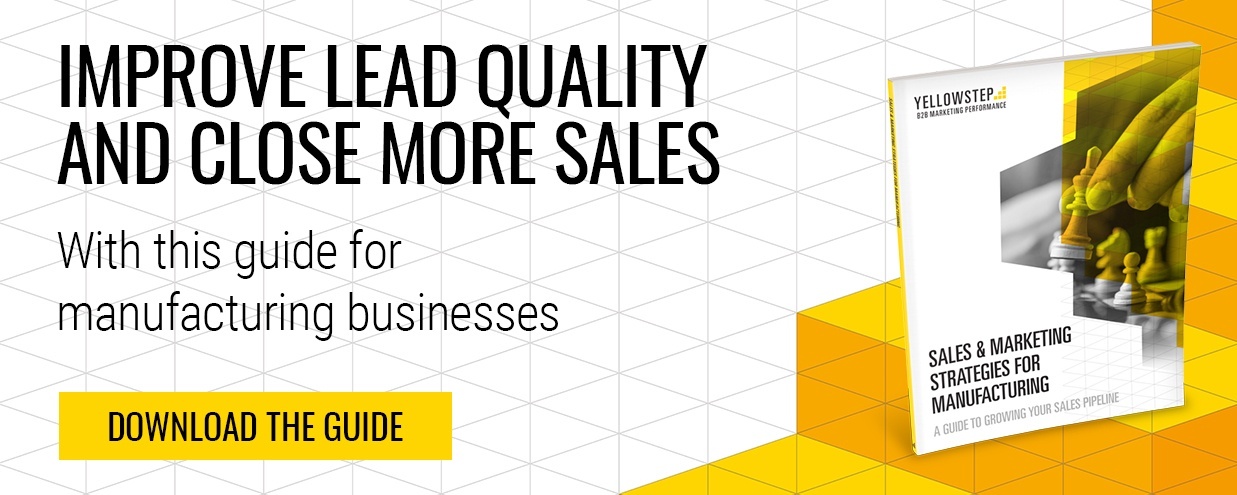With a sea of topics in front of you and tons of competition for seemingly every topic, it can be tricky to choose your next B2B blog post. But is there a universal blueprint?
The simple answer is no, of course not. Writing B2B blog posts can be complex, depending on the topic and the audience who you want your words in front of.
Now, I'm not the king of writing blog posts, but I've written a hell of a lot for B2B audiences. So I feel I can get away with telling you that a strong B2B blog post can be boiled down to the following five factors.
Dive into the concepts below, and by the end you will feel inspired to take up your pen and create your own lead generating blog posts.
Revert back to the strategy
Let's start with a simple question.
Who do you want to read your blog post?
By now, you should already have defined your core audiences. The people who will benefit from your product or service the most, or will need all of their questions answered by your terrific writing skills.
If not, you definitely need to take a look at our guide to creating buyer personas for your business.
Aside from that, you will need to ensure that each of your blogs serves a purpose to drive someone to another piece of content, or move them further through the marketing funnel. This is where your content strategy comes into play.
Each piece of premium content about a topic - whether it’s a guide, checklist, or quiz on a certain topic - should have blog posts associated with it. Hubspot calls these ‘pillar topics’.
/topic%20clusters%20SEO.png?width=696&name=topic%20clusters%20SEO.png)
So, if in doubt, keep the end goal in mind and build your content around it. For example, if you’re a fire door manufacturer and want your audience to download your Complete Guide to Fire Safety, then write a blog post on ‘Most common fire safety issues within UK businesses’.
If you’re not completely sure what to write about, and have no end-point for your website visitors to reach, then you need to review your marketing strategy. And we can help you out with that.
Find your ‘angle’
Now you have an idea of the next steps you want the reader to take, as well as the topic that you’re going to cover, it’s time to figure out what you’re actually going to say.
Now is time to do your research - what is everyone else saying about the topic? What can you say instead? How can your advice stand out among all the other search results?
You can even reference this research during your blog post, and whether you agree, disagree, and why.
External linking can also have a positive affect on SEO and the authority of your website, as long as the source of the link is trustworthy, credible, and highly-ranked.
Write an attention-grabbing headline
Marketing and sales may feel like a different ball-game, but in the end, the goal of both is to move somebody to take action. And this is what you need to do in your blog post titles.
- First of all, start with a working title capturing all the key points.
- Keep it short - headlines with eight words had a 21% higher clickthrough rate than the average title, according to a study conducted by Outbrain.
- Try to make it engaging, while also maintaining accuracy.
- Use tools such as Coshedule’s Headline Analyzer and Hemingwayapp to edit and assess your strength.
- Optimise as best you can for search or social. You can use tools like Keywords Everywhere for suggestions, conduct Google searches, or scour Twitter, LinkedIn, and Quora.
Need help with crafting enticing email subject lines? Luckily we’ve written an article on it. Check it out here
/headline-length-vs-social-shares-2.png?width=600&name=headline-length-vs-social-shares-2.png)
Build your structure
It’s no use interior designing a house if it has no bricks, someone once said (maybe).
Likewise, your blog post needs a strong structure to prop up the brilliant ideas you’ll be giving to your audience. With structure comes substance.
A typical blog post often goes something like this:
The interesting featured image: Make sure you're using an engaging image to display on social and the blog header.
The catchy, enticing intro: Grab your audience’s attention quickly and let them know that the answers they’re looking for are right here in this blog post!
The segue to the main points: So, how do we write main points for a blog post? Read on to find out more...
The main points: These come in the form of bulleted lists, headings, long paragraphs, and so on.
The conclusion: Wrap things up nicely and deliver a summary of the main angle to all the people who couldn’t be bothered to read the whole blog post.
Question or invitation for feedback: Engage your audience to respond in the comments section. Do they have any more suggestions? Have they tried any of these tactics before?
Internal and external linking
As discussed earlier, appropriate internal and external linking is a surefire way to increase your domain authority and get your future blogs performing better in search engines results.
Include external links to strong sources throughout your blog post to offer credibility and value to your reader. And you should also point them in the direction of other helpful articles that you’ve written about similar subjects.
Remember that strategy we mentioned in point one? Don’t forget to also internally link to your own calls to action, and drive your website visitors towards more helpful, related content.
Conclusion
And that’s us done - five things that you should always remember when you write a B2B blog post.
In short, they are:
- Nail your strategy
- Do your research and come up with your angle
- Use attention-grabbing titles and imagery
- Give your post some structure
- Link internallly and externally.
Got any other tips for us to improve blog posts, or tips to write for your B2B audience? Drop a comment below!
 By
By 